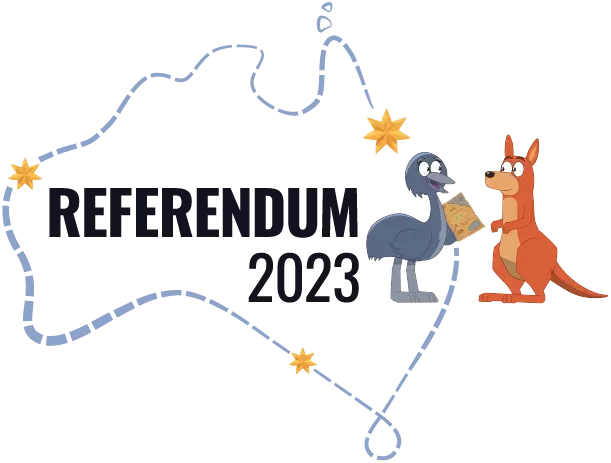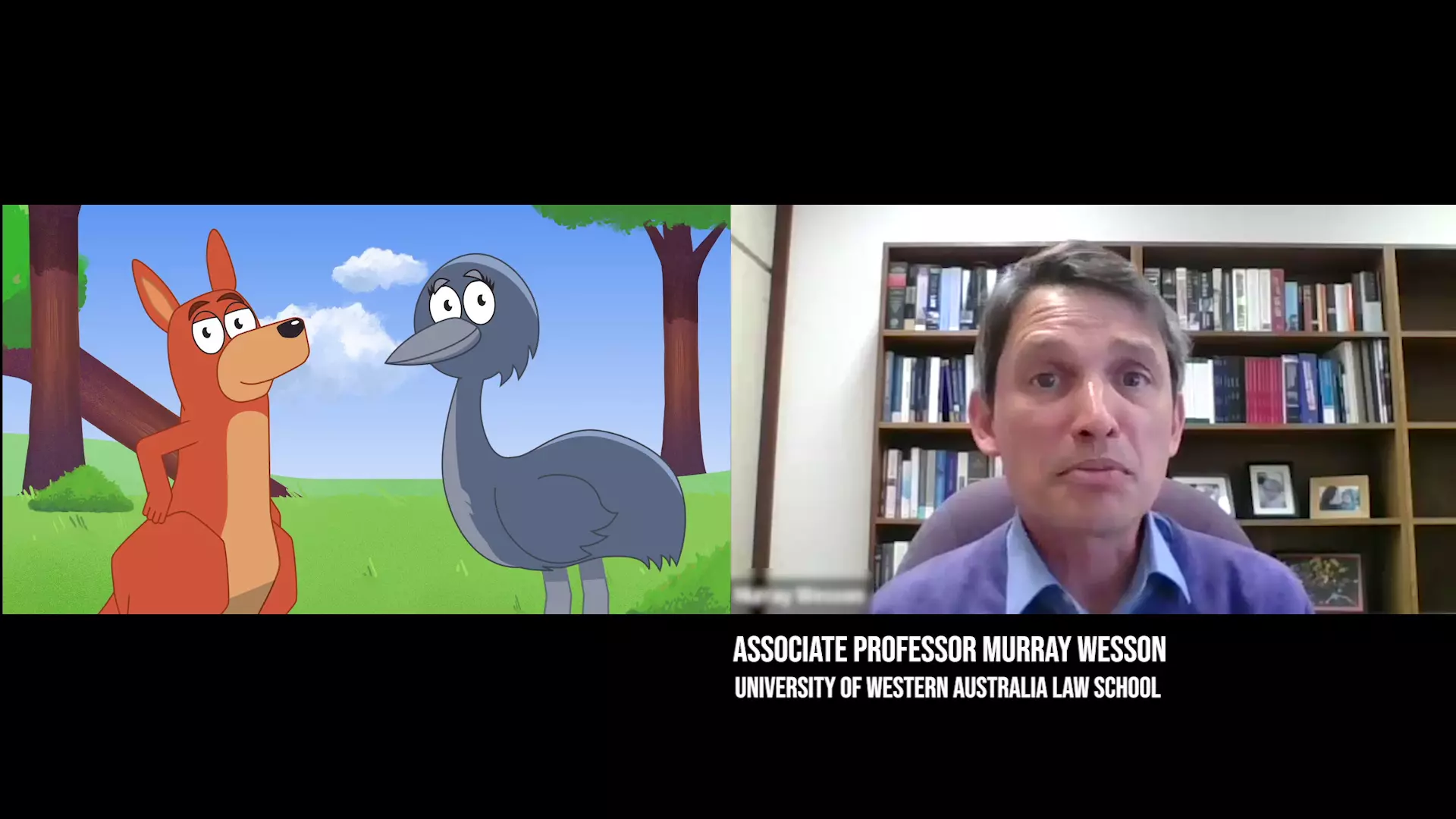Kanga:
Emmy, can you believe how much we’ve learned about Australian democracy and referendums?
Emmy:
Yep. It’s crazy, Kanga. Who would’ve thought this adventure would lead us here?
Kanga:
Not me, that’s for sure. But man, I’m sure glad they asked us to interview a Constitutional lawyer. I think this is going to be super exciting.
Emmy:
I agree. I’ve heard that the person we are about to speak to knows all about the ins and outs of the Australian Constitution and referendums, and can help us learn loads more.
Kanga:
More than we’ve already learned about our Constitutional treasure hunt? Crikey, we’re in for a real treat.
Emmy:
Look, Kanga. Here he is now. Um…Hi there, Professor. We were told that you could help us further understand the Australian Constitution.
Kanga:
Yeah. What can you tell us about referendums?
Professor Wesson:
Good question, Kanga. In order to change the Australian Constitution, what section 128 of the Constitution says is that you need to have a referendum, and that’s when the Australian people are asked whether they approve the change or not, and they have to say yes or no. For the Constitution to be changed, a majority of Australian voters need to vote yes. Not only that, but you also need a majority in four out of the six states, so four states need to support the change. Referendums don’t happen very often in Australia. There’ve only been 44 referendum questions put to the Australian people since the Commonwealth was created in 1901. And out of those 44, only eight changes to the Constitution have been successful, most recently in 1977.
Emmy:
Wow. Here we were thinking we’d learned everything there was to know about referendums. It looks like we’ve only just scratched the surface. Say, can you tell us about the separation of powers?
Professor Wesson:
So the separation of powers is a very important idea in the Constitution, and basically what it says is that we have three different branches of government. We have the legislative branch of parliament that makes laws. We have the executive branch of government that implements those laws or gets on with the business of actually governing the country. And then we have the judiciary, or the courts, where people can go if they have disagreements about what those laws mean or require of them.
Now, what the separation of powers says is that those three branches of government should be kept separate from one another to ensure that no one of them has too much power. So they should have different people, they should have different powers, and they shouldn’t be able to interfere with one another’s work. If we look at the Australian Constitution, it creates the three separate branches of government. There’s some overlap between them. So for example, our Prime Minister is part of the executive, but also a member of parliament. But we have a broad separation of powers and that helps keep the balance in the Australian Constitution.
Kanga:
That’s really clever. I think balance is, whoa, really important.
Emmy:
Be careful, Kanga. Hey Professor, I keep hearing this idea called the rule of law. Do you know what that means?
Professor Wesson:
The rule of law is a very complex idea, but I think the essence of it is that all of us every day are affected by the law. So just to take one example, if you drive a car, you need to have a license. You need to know which side of the road to drive on. You need to know what the speed limit is, and if you woke up and every morning those rules were different or the speed limit changed, or you can’t find out what the law is, that would violate the rule of law because it wouldn’t be possible to follow the law.
Now, another important part of this idea of the rule of law is that we’re equal before the law, so that everyone has to follow the same laws. So for example, if we think of the Chief Justice driving to the High Court, the Prime Minister driving to Parliament, the Governor_General driving to work, all of them have to follow the same rules of the road. So the rule of law means we need to be able to find out what the law is, we need to be able to follow the law, and the law applies to all of us equally.
Kanga:
Crikey, the people who came up with these Constitutional principles and laws are so clever.
Emmy:
I agree, Kanga.
Kanga:
Hey, speaking of people making rules and laws, can you explain representative and responsible government to me? I always struggle to figure out how that works.
Professor Wesson:
Representative and responsible government is also a very important part of our Constitution. What it means is that when we have elections in Australia, and for our federal parliament, that happens every three years, we vote for people who represent us in that parliament. So if we think about the House of Representatives, our lower house of parliament, all of Australia is divided into electorates, and each of those electorates elects one person to represent the electorates in parliament from that community, and that represents the interests of that electorate. When those people come together in parliament, they also form a government, and that government is responsible to the parliament. So what representative and responsible government helps ensure is that we have members of parliament who represent our interests and a government that works for the benefit of the Australian people.
Emmy:
Interesting. And does that have anything to do with democracy and voting? We heard a little bit about that earlier today.
Professor Wesson:
Yes, it does, because voting and democracy are part of how we elect a parliament. And there are some very interesting aspects to voting in Australia. So one aspect is that we have a secret ballot, and what that means is that no one else can know how you voted in the election. Now, most other democracies have secret ballots now, but not many people know that the secret ballot was developed right here in Australia.
Another very interesting aspect of voting in Australia is that we have compulsory voting. So if you’re enrolled as a voter, you’re required to vote. And that recognises that voting is a right, but also a duty, a responsibility. It is important to understand that voting in an election is not quite the same as voting in a referendum. So when we vote in an election every three years, we are voting for a new federal parliament. But when we vote in a referendum, then we’re voting about whether we agree with a proposed change to the Constitution. And referendums happen much less frequently than elections for the federal parliament.
Kanga:
Wow, this has been so helpful. Thanks heaps, Professor.
Emmy:
Yeah, thanks so much. I think it’s important for every Aussie to know how their federal government works and the principles that guide it.
Professor Wesson:
No problem, guys. Remember, knowledge is empowering, and you have been on such an amazing journey. You’ve been all over this country learning about the Constitutional treasures that we have under our Constitution. And I’d really like to encourage you to keep exploring because it’s so important to be an informed voter. And if you want to learn more, there are some amazing resources on the Civics Australia website.
Kanga:
He’s so wise.
Emmy:
Just because you think it all doesn’t mean you can’t learn more.
Kanga:
Good thing it wasn’t that hard to do all those quizzes and become an informed voter.
Emmy:
That’s right, Kanga. You just have to go to the website and finish the Constitutional treasure hunt.
